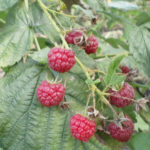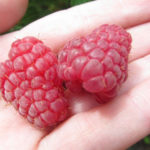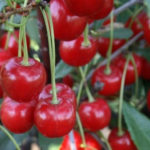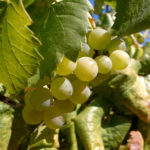Roxana strawberry variety
Roxana is a non-repairable variety of garden strawberries (strawberries) of medium late ripening. It was bred by breeders of the Italian company "New fruits" in the late 90s, the mass distribution of the new variety began only in 2001, after testing the obtained plants. Currently, our heroine is not yet well known in Russia, but she is rapidly gaining popularity. Roxana is recommended for growing in regions with a continental climate, but with proper care it will show itself well in other areas.
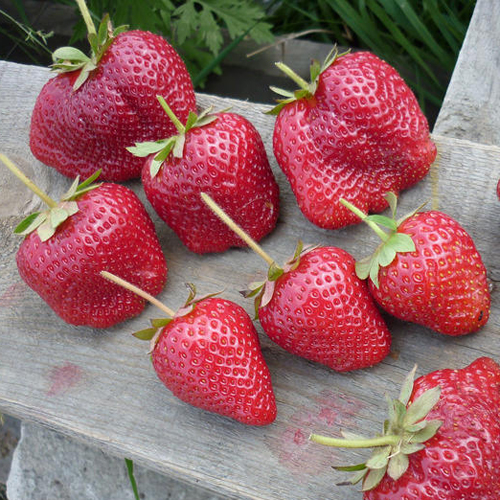
The plant is vigorous, vigorous, medium leafy, very compact. The formation is moderate, even low, but the rosettes take root quickly and well, there will be no special problems with the reproduction of strawberries. Leaves are dark green, shiny. The peduncles of the variety are long, rather high, located at the level of the leaves, and are laid on the ground under the weight of the crop.
Roxana's berries are very large, very beautiful and spectacular, with an elongated blunt-conical shape. The skin is bright red with a glossy shine; when fully ripe, it turns into a dark red color. Achenes are yellow, sometimes red, superficial, almost invisible when used. The pulp is red, medium density, juicy, with a pronounced strawberry aroma. There is a high percentage of marketable berries of the first class, substandard specimens are extremely few. A distinctive feature of the variety is the presence of tubercles in large fruits, but this is not a massive phenomenon. The largest berries can be double or comb-shaped.
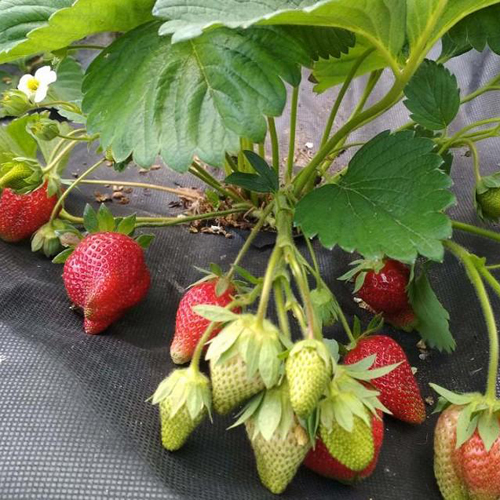
Strawberry has a truly sweet, sweet taste with a slight delicate sourness. Among other commercial varieties, our heroine, according to gardeners, really stands out for her direct taste - she has more multifaceted taste. Berries are versatile in use, they are excellent especially fresh, suitable for any processing, canning, and also suitable for freezing. The fruits tolerate transportation well and are well stored, which makes Roxana very attractive to the market. In addition, the berries of the variety are very uniform, very effective, so they will obviously not go unnoticed by buyers.
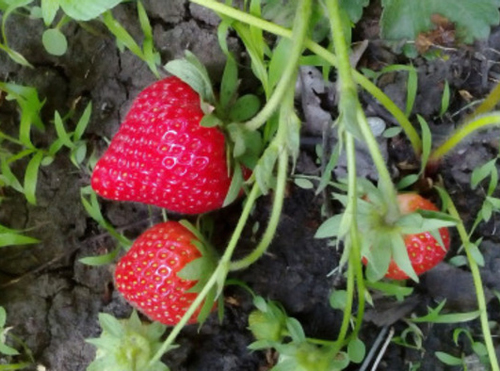
The average weight of fruits in the season is about 30 grams, specimens weighing 50 grams or more can form. Fruiting in strawberries is very stable, the berries do not become smaller by the end of the season. Ripening occurs amicably, which is very convenient - the fees do not stretch in time, take place in a short time and is very fruitful. Roxana's yield is high, about 1.2-1.5 kg of berries can be harvested from one plant. However, it should be understood that such results are achievable only with practically perfect agricultural technology and with the creation of optimal growing conditions. To achieve such indicators, a full range of agrotechnical measures is required, including, in particular, abundant regular feeding and chemical treatments. If the intensity of cultivation is moderate, the yield will still be very high - it is quite realistic to collect about 800 grams of berries from a plant, and under favorable conditions, up to 1 kg.

Various sources indicate unequal ripening dates for Roxana, and this has a completely understandable reason - in different climatic conditions, fruiting can start both earlier and later. In the southern regions, our heroine will keep up in the mid-late periods, and maybe even catch up with the mid-ripening varieties, while in the northern regions she will already manifest herself more like a late-ripening one.In any case, this strawberry is good as an extension of the berry turnover when the earlier varieties have already yielded the entire crop.

The plant is comprehensively resistant to a wide variety of diseases, but you should not understand this as total invulnerability. This means that strawberries are not affected by diseases more often than other standard varieties, and preventive treatments are highly desirable for them in any case. And given that Roxana is a commercial variety, regular high-quality treatments are highly recommended for her. Our heroine has a very decent frost resistance and winter hardiness, despite her Italian roots, but it will still be useful to take care of a good shelter, especially in regions with unstable climatic conditions. In general, as mentioned at the beginning, strawberries are recommended for cultivation in a continental climate, which implies a consistently hot summer and a stable frosty winter, as well as a small amount of rainfall. Therefore, our Italian, in principle, will very calmly react to too high or low temperatures, only if these two extremes do not abruptly replace each other. However, it should be noted that in dry seasons the berries can become smaller, so do not neglect watering. By the way, the variety is quite shade-tolerant, it can be grown in a shaded area, while the taste of the fruit will not deteriorate.
In agricultural technology, Roxana is absolutely common, but requires the timely and competent implementation of all the necessary measures. Particular attention should be paid to watering and fertilizing, since these two points have the greatest impact on the quantity and quality of the crop. With watering, in principle, everything is clear - they should be carried out regularly and in moderation, waterlogging, as well as drying out, the soil will not lead to anything good. With feeding, everything is also quite simple - the better you feed the strawberries, the more you can expect from them. It is advisable to use plants no more than 3 years, maximum - 4 years. When grown commercially, the best option is to use it on a two-year crop, and sometimes on a one-year crop, depending on the intensity of the crop. In general, in the first year of life, plants produce larger berries, but their number is less than in the second year.
Let's add a few words in conclusion. Roxana is a very promising, but not yet well-known variety, which clearly deserves attention. It has a really high yield potential that can really be revealed even when grown outdoors, without creating ideal temperature conditions. Strawberries have excellent taste, and in addition they perfectly tolerate transportation, and the berries look just great. Thus, our heroine is suitable both for growing on a personal backyard and on industrial areas, and is able to meet the expectations of both a simple summer resident and a farmer-entrepreneur.

